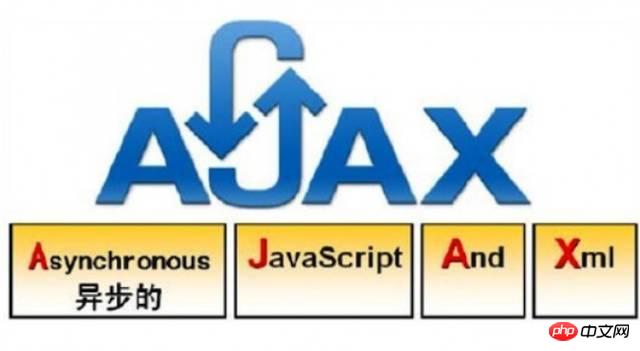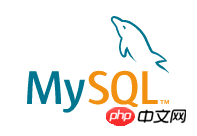Example analysis of Ajax asynchronous request technology
The full name of AJAX is Asynchronous JavaScript and XML (asynchronous JavaScript and XML). Ajax is a technology that can update parts of a web page without reloading the entire web page. Let me share with you an example of Ajax asynchronous request technology through this article. It is very good and has reference value. Friends who need it can refer to it. I hope it can help everyone.
AJAX is not a new programming language, but a new way of using existing standards. Ajax is the art of exchanging data with the server and updating parts of a web page without reloading the entire page.
ajax is a technology that can update parts of a web page without reloading the entire web page.
ajax is a technology used to create fast dynamic web pages. By exchanging small amounts of data with the server in the background. Ajax allows web pages to be updated asynchronously. This means that parts of a web page can be updated without reloading the entire page. If traditional web pages (which do not use ajax) need to update content, the entire web page must be reloaded.

In the process of web application development, the industry seems to have no clear concept of the dividing line between the front and back ends, but most people use the browser as the dividing line between the front and back ends. The part of the browser that displays pages for users is called the front end, and all the code that runs on the server and provides business logic and data preparation for the front end is collectively called the back end.

Although the separation of front-end and back-end has begun to attract attention a few years ago, many people have only heard its sound but not seen its form, so they are not interested in it. There are some misunderstandings, and they mistakenly believe that the separation of front-end and back-end is just a development model of Web applications. As long as the front-end and front-end development work is divided during the development period of the Web application, it is the separation of front-end and back-end.
In fact, this is not the case. To be precise, the separation of front-end and back-end is not just a development model, but an architectural model of Web applications. During the development period, front-end and back-end engineers can implement parallel development by agreeing on interactive interfaces; during the run-time, the front-end and back-end separation mode requires separate deployment of web applications, and the front-end and back-end use HTTP requests to interact.

1. JSON parsing
JSON (JavaScript Object Notation) is a lightweight data exchange format. JSON uses a completely language-independent text format. These characteristics make JSON an ideal data exchange language. Easy for humans to read and write, and easy for machines to parse and generate. Simply put, JSON converts a set of data represented in a JavaScript object into a string, which can then be easily passed between functions, or from a web client to a server in an asynchronous application terminal program.
2. Ajax interface call
Separation of front-end and back-end means that JSON is used to communicate between the front-end and back-end, and the two development teams use API as a contract to interact through JSON strings. The string is then passed from the Web client to the server-side program in the asynchronous application. What you learn in this part is how to initiate an Ajax request from the frontend to the backend, and finally update the front-end page after getting the data response returned by the server.
3. PHP background

PHP is a popular general-purpose scripting language, especially suitable for web development. The PHP language has the following characteristics:
1. Cross-platform, superior performance, and very economical when combined with many free platforms, such as LAMP (Linux /Apache/Mysql/PHP) or FAMP (FreeBSD/Apache/Mysql/ PHP), or if the data application is large enough, you can consider changing to PostgreSQL or Oracle, which supports N types of databases. (N >= 10)
2. The syntax is simple, if you have learned C and Perl, it is easy to get started, and it is partially similar to ASP. There are mature development tools, such as NuPHPed, or Zend Studio, etc., and you can use Eclipse and so on under the Linux platform.
3. Currently, mainstream technologies are supported, such as WebService, Ajax, XML, etc., which are sufficient for application.
4. There are many mature frameworks, such as the framework that supports MVC: phpMVC, the framework that supports event-driven events like ASP.net: Prado, the framework that supports rapid development like Ruby On Rails: Cake, etc. Sufficient for your application needs.
5. PHP 5 already has a mature object-oriented system that can adapt to basic object-oriented requirements. Suitable for developing large-scale projects.
This part mainly learns how to build a PHP server, master the basic syntax of PHP, generate a dynamic web page through PHP, master how to use PHP to complete a standardized interface, and finally return JSON data to the front desk.
4. Database

Database is a warehouse that organizes, stores and manages data according to data structure. Each database has one or more different APIs for creating, accessing, managing, searching and copying the saved data. We can also store data in files, but reading and writing data in files is relatively slow.
MySQL is a relational database management system developed by the Swedish MySQL AB company and currently belongs to Oracle. MySQL is a relational database management system. A relational database stores data in different tables instead of putting all data in one large warehouse, which increases speed and flexibility.
• Mysql is open source, so you don’t need to pay extra.
• Mysql supports large databases. Can handle large databases with tens of millions of records.
• MySQL uses the standard SQL data language form.
• Mysql can be used on multiple systems and supports multiple languages. These programming languages include C, C++, Python, Java, Perl, PHP, Eiffel, Ruby and Tcl, etc.
• Mysql has good support for PHP, which is currently the most popular web development language.
• MySQL supports large databases and data warehouses with 50 million records. The 32-bit system table file can support a maximum of 4GB, and the 64-bit system supports a maximum table file of 8TB.
This part mainly studies the addition, deletion, modification and query operations in the data. Finally, the data in the data is accessed through php, and then the response is processed and used by the front desk.
5. Ajax cross-domain
Since you need to use AJAX to request requests under other domain names at work, access will be denied. This is because based on security considerations, AJAX can only Access local resources, not cross-domain access.
Solution 1:
"XHR2" full name "XMLHttpRequest Level2" is a method provided by HTML5, which provides good support for cross-domain access and also has some new features.
* Versions below IE10 are not supported
* Just add the following two lines of code to the server-side header:
header( "Access-Control-Allow-Origin:*" ); header( "Access-Control-Allow-Methods:POST,GET" );
Solution 2:
JSONP (JSON with Padding) is an unofficial protocol that allows integrating Script tags on the server side and returning them to the client, enabling cross-domain access in the form of javascript callback (this is just a simple implementation of JSONP).
Due to the restriction of the same-origin policy, XmlHttpRequest only allows requests for resources from the current source (domain name, protocol, port). In order to implement cross-domain requests, you can implement cross-domain requests through the script tag, and then output JSON on the server. data and execute the callback function to solve cross-domain data requests.
Related recommendations:
Four steps for ajax to send asynchronous requests
Summary of how angularjs handles multiple asynchronous requests
The above is the detailed content of Example analysis of Ajax asynchronous request technology. For more information, please follow other related articles on the PHP Chinese website!

Hot AI Tools

Undresser.AI Undress
AI-powered app for creating realistic nude photos

AI Clothes Remover
Online AI tool for removing clothes from photos.

Undress AI Tool
Undress images for free

Clothoff.io
AI clothes remover

AI Hentai Generator
Generate AI Hentai for free.

Hot Article

Hot Tools

Notepad++7.3.1
Easy-to-use and free code editor

SublimeText3 Chinese version
Chinese version, very easy to use

Zend Studio 13.0.1
Powerful PHP integrated development environment

Dreamweaver CS6
Visual web development tools

SublimeText3 Mac version
God-level code editing software (SublimeText3)

Hot Topics
 1359
1359
 52
52
 The Stable Diffusion 3 paper is finally released, and the architectural details are revealed. Will it help to reproduce Sora?
Mar 06, 2024 pm 05:34 PM
The Stable Diffusion 3 paper is finally released, and the architectural details are revealed. Will it help to reproduce Sora?
Mar 06, 2024 pm 05:34 PM
StableDiffusion3’s paper is finally here! This model was released two weeks ago and uses the same DiT (DiffusionTransformer) architecture as Sora. It caused quite a stir once it was released. Compared with the previous version, the quality of the images generated by StableDiffusion3 has been significantly improved. It now supports multi-theme prompts, and the text writing effect has also been improved, and garbled characters no longer appear. StabilityAI pointed out that StableDiffusion3 is a series of models with parameter sizes ranging from 800M to 8B. This parameter range means that the model can be run directly on many portable devices, significantly reducing the use of AI
 This article is enough for you to read about autonomous driving and trajectory prediction!
Feb 28, 2024 pm 07:20 PM
This article is enough for you to read about autonomous driving and trajectory prediction!
Feb 28, 2024 pm 07:20 PM
Trajectory prediction plays an important role in autonomous driving. Autonomous driving trajectory prediction refers to predicting the future driving trajectory of the vehicle by analyzing various data during the vehicle's driving process. As the core module of autonomous driving, the quality of trajectory prediction is crucial to downstream planning control. The trajectory prediction task has a rich technology stack and requires familiarity with autonomous driving dynamic/static perception, high-precision maps, lane lines, neural network architecture (CNN&GNN&Transformer) skills, etc. It is very difficult to get started! Many fans hope to get started with trajectory prediction as soon as possible and avoid pitfalls. Today I will take stock of some common problems and introductory learning methods for trajectory prediction! Introductory related knowledge 1. Are the preview papers in order? A: Look at the survey first, p
 DualBEV: significantly surpassing BEVFormer and BEVDet4D, open the book!
Mar 21, 2024 pm 05:21 PM
DualBEV: significantly surpassing BEVFormer and BEVDet4D, open the book!
Mar 21, 2024 pm 05:21 PM
This paper explores the problem of accurately detecting objects from different viewing angles (such as perspective and bird's-eye view) in autonomous driving, especially how to effectively transform features from perspective (PV) to bird's-eye view (BEV) space. Transformation is implemented via the Visual Transformation (VT) module. Existing methods are broadly divided into two strategies: 2D to 3D and 3D to 2D conversion. 2D-to-3D methods improve dense 2D features by predicting depth probabilities, but the inherent uncertainty of depth predictions, especially in distant regions, may introduce inaccuracies. While 3D to 2D methods usually use 3D queries to sample 2D features and learn the attention weights of the correspondence between 3D and 2D features through a Transformer, which increases the computational and deployment time.
 How to solve the 403 error encountered by jQuery AJAX request
Feb 20, 2024 am 10:07 AM
How to solve the 403 error encountered by jQuery AJAX request
Feb 20, 2024 am 10:07 AM
Title: Methods and code examples to resolve 403 errors in jQuery AJAX requests. The 403 error refers to a request that the server prohibits access to a resource. This error usually occurs because the request lacks permissions or is rejected by the server. When making jQueryAJAX requests, you sometimes encounter this situation. This article will introduce how to solve this problem and provide code examples. Solution: Check permissions: First ensure that the requested URL address is correct and verify that you have sufficient permissions to access the resource.
 How to solve jQuery AJAX request 403 error
Feb 19, 2024 pm 05:55 PM
How to solve jQuery AJAX request 403 error
Feb 19, 2024 pm 05:55 PM
jQuery is a popular JavaScript library used to simplify client-side development. AJAX is a technology that sends asynchronous requests and interacts with the server without reloading the entire web page. However, when using jQuery to make AJAX requests, you sometimes encounter 403 errors. 403 errors are usually server-denied access errors, possibly due to security policy or permission issues. In this article, we will discuss how to resolve jQueryAJAX request encountering 403 error
 How to get variables from PHP method using Ajax?
Mar 09, 2024 pm 05:36 PM
How to get variables from PHP method using Ajax?
Mar 09, 2024 pm 05:36 PM
Using Ajax to obtain variables from PHP methods is a common scenario in web development. Through Ajax, the page can be dynamically obtained without refreshing the data. In this article, we will introduce how to use Ajax to get variables from PHP methods, and provide specific code examples. First, we need to write a PHP file to handle the Ajax request and return the required variables. Here is sample code for a simple PHP file getData.php:
 How to solve the problem of jQuery AJAX error 403?
Feb 23, 2024 pm 04:27 PM
How to solve the problem of jQuery AJAX error 403?
Feb 23, 2024 pm 04:27 PM
How to solve the problem of jQueryAJAX error 403? When developing web applications, jQuery is often used to send asynchronous requests. However, sometimes you may encounter error code 403 when using jQueryAJAX, indicating that access is forbidden by the server. This is usually caused by server-side security settings, but there are ways to work around it. This article will introduce how to solve the problem of jQueryAJAX error 403 and provide specific code examples. 1. to make
 Review! Deep model fusion (LLM/basic model/federated learning/fine-tuning, etc.)
Apr 18, 2024 pm 09:43 PM
Review! Deep model fusion (LLM/basic model/federated learning/fine-tuning, etc.)
Apr 18, 2024 pm 09:43 PM
In September 23, the paper "DeepModelFusion:ASurvey" was published by the National University of Defense Technology, JD.com and Beijing Institute of Technology. Deep model fusion/merging is an emerging technology that combines the parameters or predictions of multiple deep learning models into a single model. It combines the capabilities of different models to compensate for the biases and errors of individual models for better performance. Deep model fusion on large-scale deep learning models (such as LLM and basic models) faces some challenges, including high computational cost, high-dimensional parameter space, interference between different heterogeneous models, etc. This article divides existing deep model fusion methods into four categories: (1) "Pattern connection", which connects solutions in the weight space through a loss-reducing path to obtain a better initial model fusion




